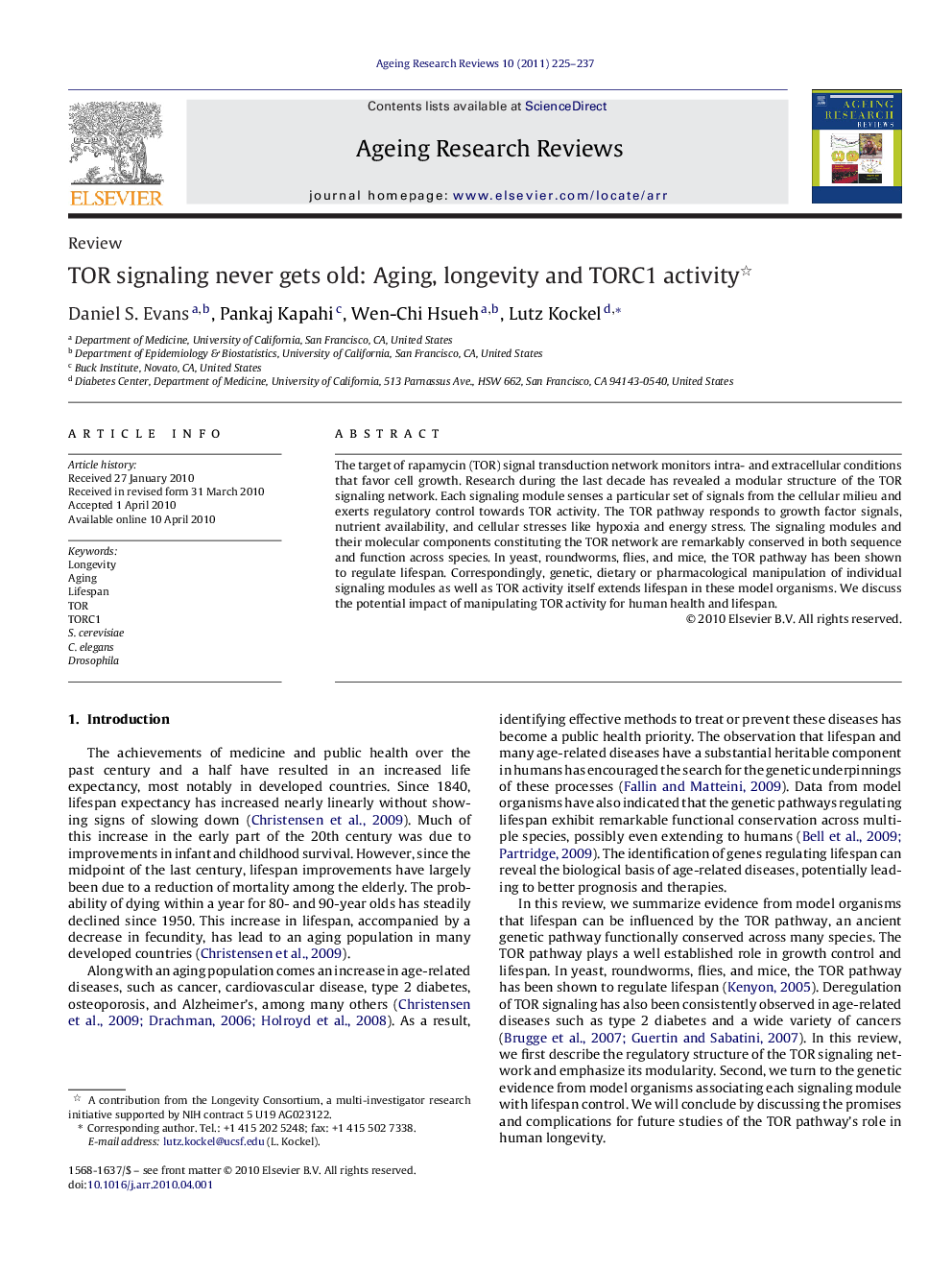| Article ID | Journal | Published Year | Pages | File Type |
|---|---|---|---|---|
| 1902367 | Ageing Research Reviews | 2011 | 13 Pages |
The target of rapamycin (TOR) signal transduction network monitors intra- and extracellular conditions that favor cell growth. Research during the last decade has revealed a modular structure of the TOR signaling network. Each signaling module senses a particular set of signals from the cellular milieu and exerts regulatory control towards TOR activity. The TOR pathway responds to growth factor signals, nutrient availability, and cellular stresses like hypoxia and energy stress. The signaling modules and their molecular components constituting the TOR network are remarkably conserved in both sequence and function across species. In yeast, roundworms, flies, and mice, the TOR pathway has been shown to regulate lifespan. Correspondingly, genetic, dietary or pharmacological manipulation of individual signaling modules as well as TOR activity itself extends lifespan in these model organisms. We discuss the potential impact of manipulating TOR activity for human health and lifespan.
